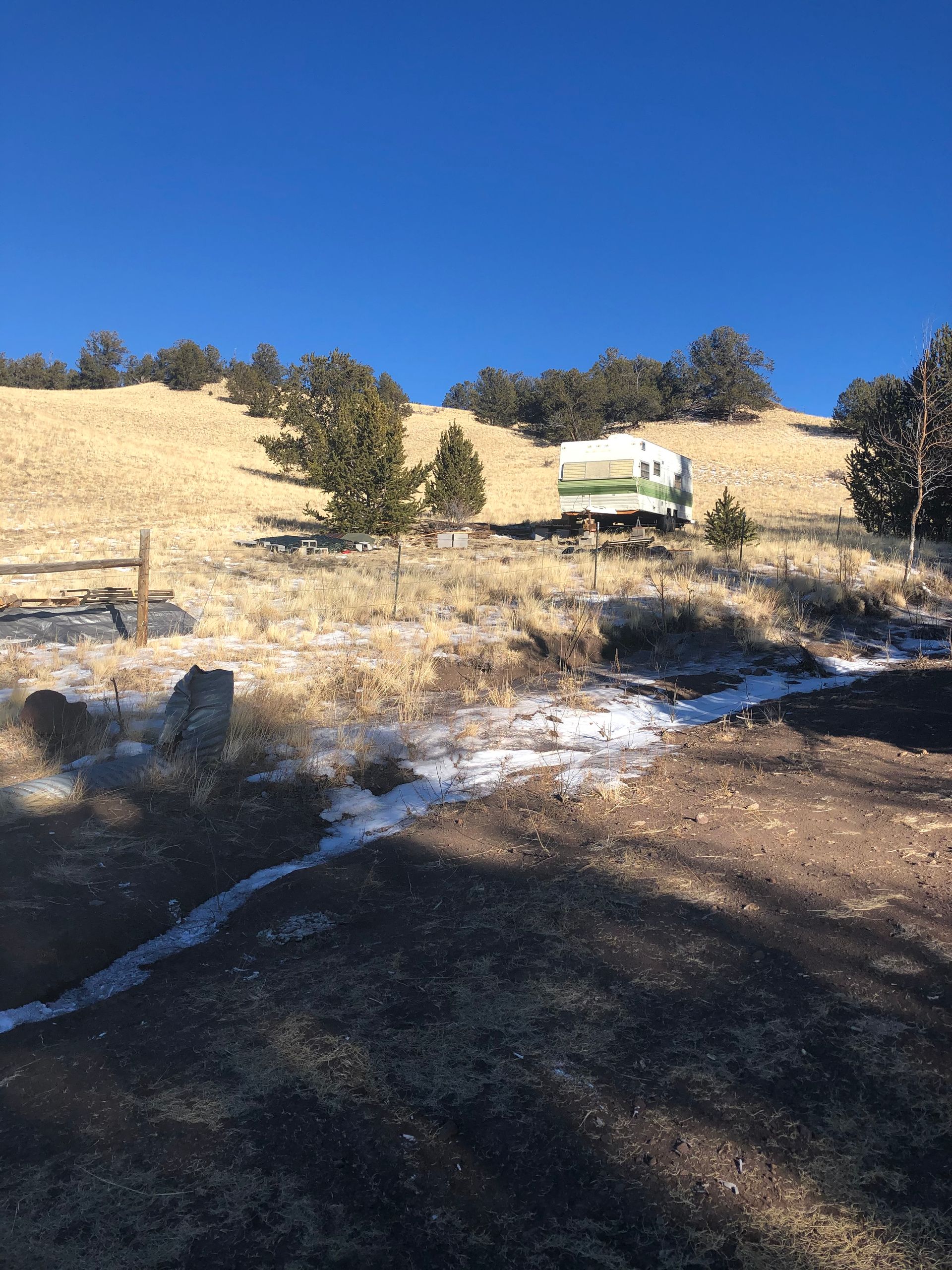Thursday's Columns
August 24, 2023
Our Story
by
Lawrence Abby Gauthier
ace reporter
The Westphalia Periodic News

The Camp
Americans in Europe
(Part 11)
Being somewhere is one thing, writing about it is not the same.
Once upon a time I was driving a car, actually, in real life -- a VW Golf -- going to France with Culley Jane and River. I’d never been to Europe before, so everything was like for the very first time. Writing about it months later isn’t the same.
Like most every morning, after coffee and planning out the day ahead with Culley Jane, I went downstairs to where I work with ideas wrapped in words and stories.
I got myself settled, fingers positioned over the keyboard and nothing happened.
Lucky for me, I knew what to do.
I needed to be quiet.
Take a deep breath.
Get a lay of the land.
I grew up way up north in a small town at the edge of the woods. All the men were hunters and the women cooked the meat. I was a boy so I had to learn how to hunt.
To hunt, the first thing you had to know was the lay of the land, the concept behind the opaque screen of trees, underbrush and ridges, outcroppings, swamps and trickles of water and snakes and biting insects.
When you went into the woods to hunt, you were looking for what the old timers called “ancient trails,” the paths of least resistance formed by the lay of the land. You’d find the deer along ancient trails. But to see them, you had to be quiet. Sitting atop a hardwood rise on a log next to gramps or dad, sipping hot coffee from the thermos, your breath white steam in the cold, you had to be quiet as the sun rose silently up out of the cold black shadows of the northwoods at night.
Usually, what we see is what we’re thinking and if there’s a lot of noise in our thinking then that’s what we’ll see, noise, a tangled-up bag of disconnected bugs and branches -- particular things, the parts of something we arrange depending on our mood and then call it “the woods.”
That’s why people from the city think the woods is such a dreamy place, almost turning it into a religion… because we arrange and rearrange the parts of the whole depending on our mood.
But the lay of the land is where patterns enfold into themselves and into one another like waves in a storm, becoming less like the mathematical summation of parts and more like a voice with a message that you can hear when you’re quiet and listen. The message contains instructions so that when you get to the next intersection you’ll know whether to turn left or to turn right.
When we were back there, in Europe, after our first three days in Heidelberg, motoring towards France, me driving, my thinking was filled with the noise of particular things. The beat and rhythm of the traffic. I noticed that all the 18-wheelers on the highway were cab-overs, which got me to thinking about how different that was from the big rigs of America and about why that was.
I noticed that there were no billboards along the highways advertising hotels and hamburgers and medical procedures. Why was that, I wondered? There had to be a reason. Leibniz said that nothing happens for no good reason, even acts of ill intent.
I thought about lunch.
I thought about Ukraine and energy and the role of money.
I thought about our granddaughter in the back seat… was she getting bored? We’d be on the road for hours before we got to our next stop -- in France.
Imprinted on the backscreen of my thoughts was the image of the fold-out road map I’d bought at a gas station the day before. Culley Jane said we wouldn’t need it, that we had iPhones and the GPS lady. But I’m comforted by paper maps. Many people are comforted by the King James Bible. They trust that if they do as they’re told they’ll get to where they’re wanting to go. That’s how I feel about paper maps. I studied it the night before we left Heidelberg.
Driving along, I thought about where we were; about where we were going; about how to get there. I thought I knew. But then, a couple months later, as I sat down to write my next column about the day we drove to France, I came up against a wall with no obvious door anywhere along its surface.
Already I’d written ten columns, just about our first three days in the Rhenish Palatinate. It was time to start writing about our journey to France and what happened there. But I came up against a wall and didn’t know how to get through it, or if I should even try.
Culley Jane asked me what my next column was going to be about.
I said I didn’t know. I said maybe I’d already written enough about our trip to Europe.
She said the word she knows I don’t like… “whatever.”
That’s when I saw it -- the door through the wall.
“The lay of the land,” I said, suddenly excited. “I need to get the lay of the land. I need to catch my breath. I need to be quiet.”
We decided to go up to the camp.
Our camp is on five remote acres we legally own along the southern rim of a wide basin between Pikes Peak and the Rockies. I bought the land sight unseen five or six years ago while I was still driving truck. I was somewhere in Texas or New Jersey when my daughter, Elli, called me to tell me about something she’d noticed on some sort of internet site -- five acres bordering a national forest a couple hours from Denver, twenty miles south of a town called Hartsel, a town I’d never heard of. She said the seller wanted $5,000 -- cash -- in $100 bills -- and had to have it right away, like tomorrow. Given the area’s inflated prices for “mountain land,” it was a steal. It sounded like one of those things that’s too good to be true, but that didn’t mean it had to be. I’d seen stuff like that work out for the best in the past too.
One of the things they say about over-the-road truckers is that they don’t have any money, but that they always have cash. I could do it if I decided to do it. To decide, however, I had to get the lay of the land.
I pulled into a truck stop, took a deep breath to silence the noise of the road and then got down my box of old paper maps from the upper bunk in the sleeper. On the lower bunk, I laid out two big Rand-McNally’s -- one of Colorado and one of America.
I had to use a magnifying glass, but I found Hartsel on the Colorado map. It had a population of 38 people. I imagined an old western town from a John Wayne movie. Windswept. It was in the middle of what looked to be a large, treeless, high desert basin covering an area of from thirty to forty miles across in any direction, surrounded and defined by forested mountains. Elli had said the land bordered a national forest. So I figured the land must be located along a ridge of the basin, looking down and out over it.
With a black magic marker I put a dot on the map of America and stepped back onto a mossy log in the woods sitting next to gramps or dad… Quiet. “Shhh… ancient trails, where we find the deer.”
Then, boom! It hit me -- the lay of the land. It looked like the basin was the source of an ancient trail!
Through the magnifying glass I took a closer look at the thin blue lines on the map tracing the movement of water across the continent. Yes! The basin was where the spring runoff from the surrounding mountains merged to form the headwaters of the South Platte, which joined the North Platte out of Wyoming near Ogallala in Nebraska and then across the High Plains of America to the lands of the Omahas, long settled along the banks of the Missouri coming down out of Montana and the Dakotas and then downriver to St. Louis. It was an ancient trail formed by the lay of the land that many followed in wagons pulled by horses seeking a better life. A civilization came into being and I had a chance to buy land at its source, cheap, for reasons best not known.
Something about the whole deal made sense to me.
I called Elli back. “I’ll transfer the funds into your account right now,” I said. “Let’s do it.”
So that’s how we got the land that I hope stays in the family for generations. Maybe someday it will become an unincorporated village called Westphalia, Colorado.
Culley Jane and I head up there five or six times a year to make the place more civilized. We bought a used travel trailer and hauled it up there. Every time we go I come back with a big load of firewood.
At night you can see the lights of Hartsel twenty miles away like a single star in a black sky.
Driving back home to Denver after our day at the camp, I told Culley Jane that I knew what I was going to write my next column about.
“O… K…”
“Ancient trails.
She thought about it.
Then nodded.
